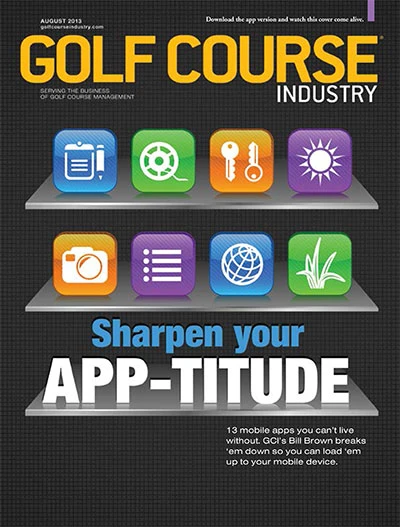 |
Cut is king. It’s a simple mantra among golf course superintendents. It plays a major factor behind their approach to reel and blade maintenance and is at the core of their philosophy toward these practices.
GCI, in partnership with Foley United, developed a reel and blade maintenance questionnaire that was distributed to GCI’s readership in the U.S. via the online survey portal, SurveyMonkey. Among those who participated in the research, more than half (62 percent) worked at non-private courses and nearly half reported an annual operating budget of less than $500,000 (48 percent). GCI sat down with Jim Letourneau, president and COO of Foley United to provide some analysis based on a more detailed look at the data. This month we dialed down on this data, specifically looking at trends among facility types (private vs. non-private) and operating budget (less than $500,000 vs. $500,000 to $1M vs. more than $1M).
“Without a doubt, quality of cut seems to be a major factor regarding these maintenance practices,” Letourneau says, pointing to the fact that, consistently, nearly three quarters of respondents, regardless the breakdown, indicated they maintain reels and blades when the quality of cuts visually begins to suffer. “And this sentiment is consistent regardless of the type of facility or the size of budget that the superintendent (or maintenance technician) is working with… you have to maintain the best cut possible.”
While some of the detailed survey results remained consistent against the overall findings, Letourneau did provide some analysis on the following data points.
Spin and Relief Grinding.
While the majority of respondents (63 percent) practiced spin and relief grinding, the highest percentage were among private facilities (72 percent) with budgets of $1 million or more (73 percent). This certainly reflects the notion that, after quality of cut, the depth of reel and blade maintenance practices becomes a question of time and resources, Letourneau says. “Some courses can just afford to make this happen,” he says.
 |
New Bedknives.
While the majority of respondents (83 percent) said they do grind new bedknives, nearly a quarter (22 percent) of small-budget courses were not.
“It’s another reflection of time and resources for some superintendents and/or maintenance technicians,” Letourneau says. “Outside of using tournament bedknives, we recommend that you always grind new bedknives because a new bedknife typically will not mount 100 percent accurately and needs to be ground to fit correctly.”
Lapping.
Respondents from nearly three quarters of non-private facilities (71 percent) indicated they lap, while 75 percent of those courses with less than a $500,000 budget will lap.
“It’s simply a cost factor,” Letourneau says. “Also, you most likely need to take geography into account, as well. Northern courses will have shorter seasons. Typically, we see more guys lap in the North vs. the South because the season is shorter.
Grinding Practices and Philosophies.
Interestingly, survey respondents indicated they were not necessarily set in their ways when it came to their reel and blade maintenance philosophies. For example, 83 percent of respondents from non-private courses and 79 percent from courses operating on less than $1 million budget said they were open to hearing other opinions and practices.
“The responses to this section of the survey were definitely interesting, especially when you consider that many of respondents indicated they learned reel and blade maintenance from their courses’ equipment technician (45 percent) or another superintendent (40 percent),” Letourneau says. “This could be interpreted that these are practices that are being passed down from one person to another, perhaps from one generation to the next. While they may be passing down things that are correct, they may also be passing down information that is no longer relevant or even wrong.
“This particular data tells me that we, as manufacturers, need to be putting more emphasis on providing training on reel and blade maintenance and making sure the correct practices are being taught, especially in light of the fact that respondents indicated they’re open to new ideas,” he added.
Check out the app
For more reel and blade maintenance research charts and graphs, check out this story on your ipad or iPhone
 |

Explore the August 2013 Issue
Check out more from this issue and find your next story to read.
Latest from Golf Course Industry
- The Cabot Collection announces move into course management
- Carolinas GCSA raises nearly $300,000 for research
- Advanced Turf Solutions’ Scott Lund expands role
- South Carolina’s Tidewater Golf Club completes renovation project
- SePRO to host webinar on plant growth regulators
- Turfco introduces riding applicator
- From the publisher’s pen: The golf guilt trip
- Bob Farren lands Carolinas GCSA highest honor






